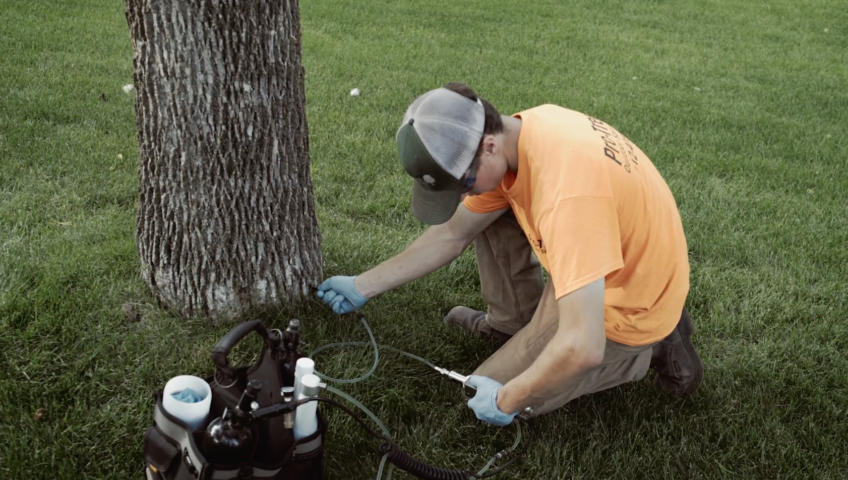Minnesota is lucky to be home to such a diverse collection of trees. Statehood began in 1858, but many of our old-growth forests have been around for even longer. These forests have trees dating back over 200 years, according to the Minnesota Department of Natural Resources (DNR). These massive and historic trees can even be seen speckled throughout neighborhoods, public parks, and walking trails.
When we think of Minnesota’s natural resources, everyone is drawn to the 10,000+ lakes. Many people forget though, that surrounding those lakes is a unique array of coniferous and deciduous trees.
Unfortunately, these living historic monuments are under attack. The Emerald ash borer (EAB) is wreaking havoc on Minnesota’s trees.
What is the Emerald Ash Borer?

The Emerald ash borer is a type of metallic beetle native to eastern Asia. They are bright green with a hard shell that covers their wings. Adult beetles can reach up to a half-inch in size, making them very difficult to see. These insects were first identified in Detroit in 2002. It is suspected they were carried over by hitching a ride on shipping pallets. Since then, these invasive insects have spread to over 30 states and 5 Canadian provinces.
Emerald ash borers lay their eggs on the bark of ash trees, and once the eggs hatch, the larvae burrow into the tree trunk to feed and overwinter. In the late springtime, these full-grown insects tunnel their way out, ready to infest the next ash tree.
Where Are EAB Found?
In Minnesota, these beetles can be seen from late May to early June. Once they emerge from the tree they fly to the next available ash tree, beginning to feed on its leaves before laying eggs on the bark and starting the cycle all over again.
To spare the remaining trees, Minnesota DNR has implemented biocontrols in some of these hard-hit areas. However, one of the most important ways to combat this pest is through prevention and properly identifying signs of infestation.
Signs Of An Emerald Ash Borer

This beetle can only fly within a small radius, which means in order to spread further, it hitches rides on various transportation routes or flies from tree to tree. Because of this small flight radius, we can help limit the spread of EAB to neighboring ash trees if prevention strategies are performed. In order to recognize possible signs of EAB activity, view the following items to notice:
- Thinning or dying tree crowns
- Increased woodpecker activity
- New branch and leaf growth at the base of the tree
- Splitting bark or signs of tunneling under the bark
- D-shaped exit holes
By identifying these infected trees, we can help protect our forests and keep the EAB from wreaking further havoc on our ash tree populations.
Next Steps
Thankfully there are several Emerald ash borer treatments available to help prevent the spread of these beetles and kill those that have already infected the tree. These include,
Soil Injection
These are poured around the roots of the affected tree. The tree absorbs the liquid and the beetle is killed when they begin to eat the bark of the treated tree.
Trunk Injection
This method uses the same treatment as soil injection, but instead of soaking the roots, it is injected into the trunk to attack the beetles burrowing under the bark.
Canopy or Trunk Spray
This treatment is sprayed directly onto the leaves, trunk, or both. This method will kill the EAB as they begin to feed on the leaves or trunk of the ash tree.
Seek Help From A Tree Care Expert
Unfortunately, not all infested ash trees can be saved. In some cases, it is more beneficial to remove the tree. The removal will still help prevent the spread of this invasive beetle.
If you need assistance in preventing the spread of the Emerald ash borer in the greater Twin Cities area, call the experts at Pro-Tree Outdoor Services. Our professional EAB treatment technicians are ready to assist you to protect your trees from these devastating pests.


Write a Comment